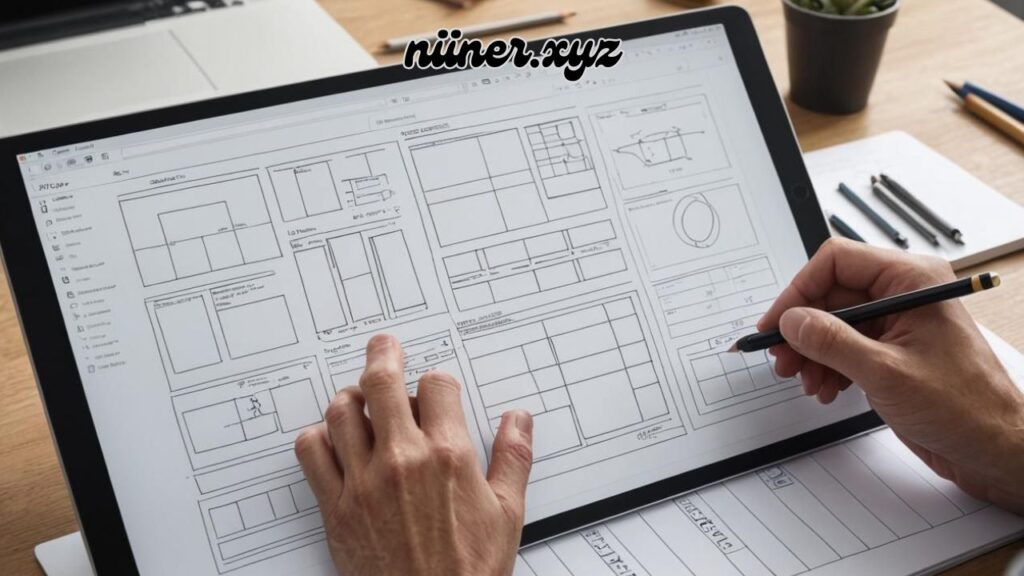Timeline for Mobile App Development
Introduction
Building a mobile app involves careful defining steps and extensive research. Knowing how long it takes to build, helps businesses plan appropriately to utilize their resources. Mobile app marketing research, deployment, and post-launch maintenance are critical steps that must be completed for the product to be successful.
This guide aims to provide an overview of mobile app development processes and details their duration alongside the ideal execution strategies to complete them proficiently.
Table of Contents
Key Phases of Mobile App Development
Phase 1 – Planning & Research (2-4 Weeks)
The first thing that needs to be done is comprehensive mobile app marketing research. This determines the entire mobile app development process.
Key Steps:
- Outline the core objectives of the mobile app.
- Define the target audience.
- Conduct competitive analysis.
- Map out the development timeline.
A plan for mobile app development saves businesses from many problems that come from poor planning and enables them to smoothly transition through the phases of the project.
Phase 2 – Wireframing & Prototyping (2-3 Weeks)

This phase is fundamental in understanding what will be the various phases in development, long before the coding starts.
Key Steps:
- Outline wireframes to map out user flow.
- Build interactive prototypes.
- Solicit feedback from stakeholders.
At this step, the amount of time required to build the mobile app is significantly reduced while ensuring a good user experience is established.
Phase 3 – UI/UX Design (3-5 Weeks)
Screen retention is often influenced by how well the interface is designed. UI and UX design for mobile and other types of applications concentrates on beauty, ease of use, and marketing as well.
Key Steps:
- Designing a user-friendly UI
- Choosing color palettes, typefaces, and symbols
- Usability enhancement through navigation ease
These and other features of the application make it visually attractive, which improves the retention rates of users.
Phase 4 – Development & Coding (8-12 Weeks)

The design stage that takes the longest time is coding and programming which entails UI/UX design on the client side, and server-side development for the application.
Key Steps:
- Choosing between Android and iOS app development
- Adding function calls to systems (API’s for mobile apps)
- Adding security policies and outlining the structure of the databases
This Next step in the app development cycle makes the most sense for the agile approach due to the nature of this work.
Phase 5 – Testing & Quality Assurance (3-6 Weeks)
It does not matter what type of mobile application you create if you fail to test it. Mobile app testing and quality assurance help in finding and fixing problems before public exposure.
Key Steps:
- Implementation of functional, load, and penetration tests
- Real-user beta testing
- Bug fixes and tuning
Performance monitoring system optimization is the right step in further improving the app’s functionality.
Phase 6 – Deployment & Launch (2-4 Weeks)
It’s important to note that when the application has been thoroughly tested, one is ready to make it available for users. Understanding app submission regulations and the marketing strategy silo is the final part of the deployment phase.
Key Steps:
- App store submission requirements and procedure documents preparation
- Marketing and pre-launch strategies
- Optimizing app visibility for Google Play Store and Apple App Store
This approach makes certain the app is getting to the correct users.
Post-Launch Activities
Phase 7 – Maintenance & Updates (Ongoing)

Post-launch app maintenance makes sure that there is success in the long run by responding to user feedback and updates.
Key Steps:
- Watching user feedback and looking at crash data
- Bug fixes and subsequent upgrades
- Enhancing mobile app scalability
Digital transformation is constant. App relevancy and competition are ensured through perpetual updates and maintenance.
Factors That Can Impact the Mobile App Development Timeline
What are some factors that influence how long an app takes to develop? What is the mobile app development timeline influenced by? Let’s get into details:
- Development Team – An existing team with experience in app development will help speed it up.
- App Complexity – A leaner and less feature-rich application tends to be completed within a shorter time frame as opposed to feature-rich applications.
- Budget Constraints – Having limited financial resources will likely hinder the timeline.
- Technology Stack – The best frameworks used for mobile application development increase the likelihood of speeding up production.
How to Speed Up Mobile App Development Without Compromising Quality
The correct strategies aid in saving time without having to risk the quality of an app.
Best Practices for Reducing App Development Time:
- Agile development: These make room for constant feedback and progressive steps with every change.
- Pre-built Solutions: Making use of templates cuts out extensive coding time needed to build an application.
- Parallel Development: Crafting various segments of the application at once increases the chances of speed.
- Automated Testing: Allows users to detect bugs early to stave off any delays.
Using agile mobile application development techniques allows for faster development cycles without performance issues.
Realistic Timeline Estimates for Different Types of Apps
The timeline for developing the application will depend on its level of sophistication.
| App Type | Estimated Development Time |
|---|---|
| Simple Apps (e.g., calculators, to-do lists) | 3-6 months |
| Medium Complexity Apps (e.g., e-commerce, social media) | 6-9 months |
| Complex Apps (e.g., AI-based platforms, fintech solutions) | 9+ months |
Estimates such as these serve to structure an efficient stepwise plan for developing the app.
Conclusion
Building a mobile solution is all about strategy, planning, and following the App Development Life Cycle. Each stage of the process from wireframing to deployment and even maintenance is critical for the final product to succeed.
Custom mobile applications get developed in record time without sacrificing quality and have great functionalities. A custom mobile application development timeline gives maximum efficiency and scalability without compromising user experience.
FAQs
- From scratch, how long does mobile app development take?
- Mobile app development estimates can take anywhere between 3 months for simple apps and upwards of 9 months or more for more complicated ones.
- Is it possible to build a mobile app in less than three months?
- Yes. But only for simple mobile apps with little functionality and features. More intricate applications are more time-consuming.
- Which phase of mobile application development usually consumes the most time?
- App design and code development is what tends to lag the most, typically between 8 to 12 weeks or even longer.
- How much will it cost to develop an app in 2024?
- Cost estimates differ per features, platforms, and app complexity. A basic app can be created at an estimated $10k whereas a more complicated app would cost over $100k easily.
- Do you know the best approaches to decrease mobile app development speed?
- Developing using agile methodologies, pre-existing frameworks, and rapid mobile application development approaches can aid in drastically reducing development time.

